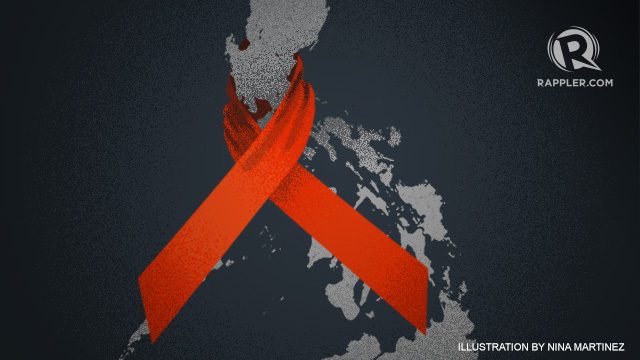SUMMARY
This is AI generated summarization, which may have errors. For context, always refer to the full article.

DURBAN, South Africa – Despite a general global trend of decline, the rate of new human immunodeficiency virus (HIV) infections increased in a number of countries, including the Philippines, over the last decade.
A study by the Global Burden of Disease Collaborative Network, released at the 21st International AIDS Conference in Durban, South Africa, revealed that 74 countries saw increases in new HIV infection rates between 2005-2015. Apart from the Philippines, other countries included in the report were Egypt, Pakistan, Kenya, Cambodia, Mexico, and Russia.
“The continuing high incidence of new HIV infections is probably the most disturbing fact that has been announced at this conference,” said Peter Piot, director of the London School of Hygiene and Tropical Medicine.
There are an estimated 36.7 million people living with HIV (PLHIV) around the world. The rate of new infections has been reduced, but there are still roughly about 2 million new HIV infections annually. The number of AIDS-related deaths has been reduced by 42% and has been declining from 1.8 millions deaths in 2005 to 1.2 million deaths in 2015, mostly due to the increased number of people on anti-retroviral therapy (ART).
Since the peak of the global incidence of HIV in 1997, the field of HIV/AIDS research, care, and treatment saw many scientific advances such as the almost complete eradication of mother-to-child transmission and the availability and accessibility of life-saving ART to an estimated 17 million people.
But activists and health experts say much still needs to be done. There are still about 19 million people who are living with HIV but are not on ART. Vulnerable populations like people who inject drugs and sex workers are criminalized, and in a number of countries, homosexuality is illegal.
AIDS-related complications constitute the leading cause of death among adolescents (10-19) in Africa and the second leading cause of death among adolescents globally.
Failing adolescents
About one-third of the world’s population is estimated to be between 10-24 years old, representing an unprecedented number of young people entering reproductive age.
For many adolescents, access to sexuality education, testing, and treatment are limited or even restricted by law.
In the Philippines, newly diagnosed HIV cases among mostly young men and transgender people who have sex with men increased by 230% from 2011 to 2015.
Restrictive laws that prohibit minors from getting tested, accessing free condoms at public health clinics, and the poor implementation of comprehensive sexuality education in schools are blamed for the general low awareness and understanding of risky sexual behavior among young people.
Focus group discussions conducted by the National Youth Commission (NYC) showed that some teens would use the plastic brand, Calypso – normally used for iced candy – as a substitute for condoms.
“If we don’t get to diagnose them, we cannot treat them, and if we cannot treat them, we will see these adolescents dying within the next 10 years,” said Dr Genesis Samonte, head of the Department of Health (DOH) HIV/AIDS Surveillance Unit.
Last June, United Nations member states gathered in New York to craft a political declaration that would include a set of “specific, time-bound targets and actions” that must be achieved in line with the goal of eradicating HIV by 2030.
The Philippine declaration adopted by then DOH Secretary Janette Garin was a disappointment to some activists, who thought it only specified HIV interventions for groups that are “politically palatable to recognize.”“Now is not the time to push specific key populations into the closet, and naming them is not to stoke stigma against these key populations – we are already stigmatized,” said activist Jonas Bagas.
“We need to ensure that our response to our exploding HIV epidemic is responsive to the specific needs of the key populations. In short, it means that DOH should be willing to spend resources and political capital for HIV programs for MSM, people who use drugs, and transgender people,” he added.
Increasing HIV infections, decreasing funding
The continued rate of new HIV infections comes at a time when funding for HIV interventions from donor governments is declining in the face of global austerity measures and humanitarian crises.
A decline of more than a $1BN (USD) in donor government funding to address HIV in low to middle income countries was noted from 2014 to 2015.
Health experts are worried that advancements made in the HIV response will be reversed and put vulnerable groups at increased risk because of the decline in funding, the first in 5 years.
“We have a scenario of declining global funding and increased HIV infections,” Piot said, noting that “when there is less funding, there is fewer (HIV) interventions on the ground. This is not rocket science.” – Rappler.com
$ 1 = P 47.16
Add a comment
How does this make you feel?


There are no comments yet. Add your comment to start the conversation.